General notes:
Note to any beginners: Please be VERY careful when practising this kick.
Not only can the practising of the axe kick do major damage to the hamstrings
if not warmed up properly, but I have seen more injuries caused to opponents
by the axe kick than any other kick. The reason being is that it is very
difficult to control the leg during execution. This kick gets its power
not from a wind-up and whip-out method as most other kicks, but instead
uses the weight of the leg for the impact. For this reason, this kick
tends to be more effective for taller people. Both the upward movement
and the downward movement of this kick can be used as an attack, and because
of its wide range of movement, the point of contact can be almost anywhere.
For the upward stroke of the kick the most effective contact areas are
the groin and the chin and for the decent of the kick, the contact area
can be the top of the head or the collarbone. The kick can also be used
as part of a combination to break a guard to move in with another attack
of some kind. Another effective way of using the downward motion of the
kick is on floored opponents, but if doing so, please exercise caution
because the full weight of the leg on a floored opponent can be very dangerous,
and depending on what part of the body is hit, fatal.
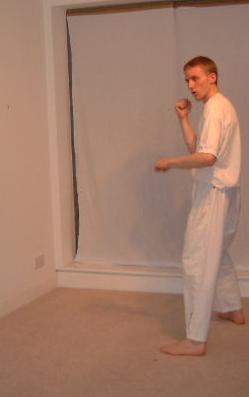 |
1) Stand in the ready stance. |
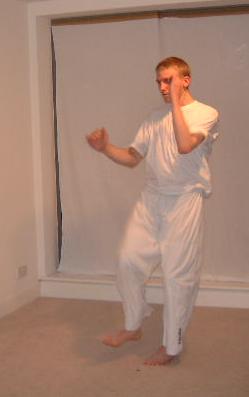 |
2) While shifting the weight of the body on
to the front leg, begin to lift the kicking leg. The upper part of
the body should remain upright at all times, and the arms should be
kept up as much as possible to protect the head and torso. The supporting
foot should face towards the target area at all times during the kick,
and should never move. |
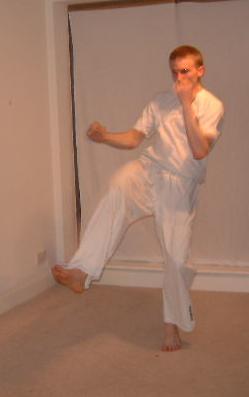 |
3) Continue to raise the leg, keeping it as
straight as possible. |
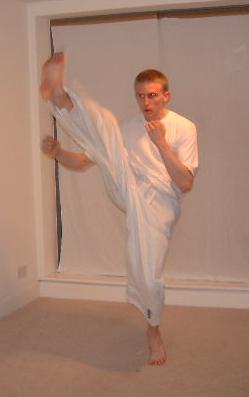 |
4) For beginners, I recommend not raising
the leg much past this point unless you have enough flexibility to
do the splits. It is very easy to continue past this point even without
the flexibility, and can cause major damage to the hamstrings. |
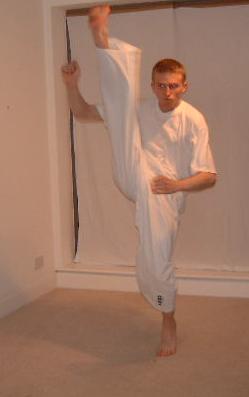 |
5) At the top of the kick here, it is possible
to just drop the leg and allow the weight of the leg to dictate the
power. In order to maximise it, you must time it so that at the peak
of the kick, the hamstrings should take over from the quadriceps so
that the leg can be pulled down on to the target. If at all possible,
and (for the more flexible people), try and keep the supporting foot
flat on the floor. If you find it is not possible to do it, it doesn't
matter, it just offers more in the way of stability when executing
the kick. |
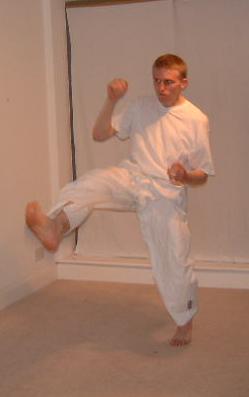 |
6) The kick should be brought back down via
the same route. However, lean more in to the kick for the way down
in order to finish the kick more quickly and also to increase the
power. |
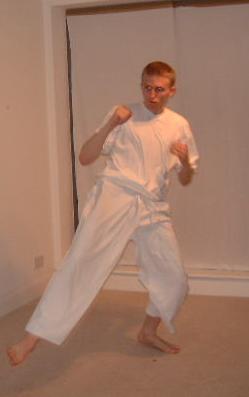 |
7) On a floored opponent, this would be the
point of contact. And with the full weight of the leg behinds it,
becomes a devastating blow. |
 |
8) Because of the body leaning into the kick,
the kicking foot should land on the floor in front of you. The kicking
leg has now become the lead foot. |
 |
|
Click here to see the kick in action !
|
Back to tutorial index page |